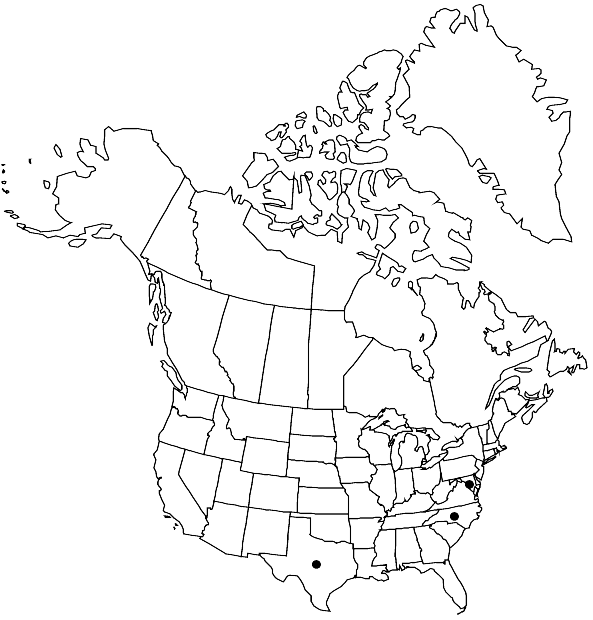Difference between revisions of "Bruchia fusca"
Bull. Torrey Bot. Club 21: 361, plate 216. 1894,.
FNA>Volume Importer |
imported>Volume Importer |
||
| Line 45: | Line 45: | ||
|publication year= | |publication year= | ||
|special status= | |special status= | ||
| − | |source xml=https:// | + | |source xml=https://bibilujan@bitbucket.org/aafc-mbb/fna-data-curation.git/src/bb6b7e3a7de7d3b7888a1ad48c7fd8f5c722d8d6/coarse_grained_fna_xml/V27/V27_621.xml |
|genus=Bruchia | |genus=Bruchia | ||
|species=Bruchia fusca | |species=Bruchia fusca | ||
Revision as of 23:34, 27 May 2020
Distal leaves ovate, 0.6–1.3 mm, leaf base not differentiated in shape; distal laminal cells short-rectangular. Sexual condition autoicous. Seta 0.3–1.2 mm. Capsule neck short, obovate. Spores pitted. Calyptra smooth.
Phenology: Capsules mature spring.
Habitat: Soil, commonly surrounding quartz pebbles
Elevation: low to moderate elevations
Distribution

Md., N.C., Tex.
Discussion
Bruchia fusca is much like B. hallii and differs almost exclusively in the ornamentation of the spores, a trait that may prove to be an intraspecies genetic difference.
Selected References
None.
Lower Taxa
None.
... more about "Bruchia fusca"